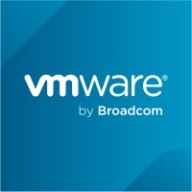

VMware Aria Automation and Juniper AppFormix compete in the cloud management and automation category. VMware Aria Automation seems to have the upper hand due to comprehensive support and cost-effectiveness, while Juniper AppFormix is notable for its advanced analytics features.
Features: VMware Aria Automation offers robust automation capabilities, workflows, and lifecycle management. It enhances flexibility and efficiency in cloud infrastructure. Juniper AppFormix excels in real-time analytics and predictive insights, optimizing virtual environments dynamically and providing detailed performance monitoring.
Ease of Deployment and Customer Service: VMware Aria Automation is known for easy integration across various platforms and responsive support. Juniper AppFormix, although more complex in deployment, is supported by detailed documentation and extensive service resources, making it slightly less user-friendly compared to VMware's streamlined process.
Pricing and ROI: VMware Aria Automation has competitive setup costs, offering significant ROI through automation that reduces manual tasks. Juniper AppFormix, despite its advanced features, presents a higher pricing structure, and the enhanced analytics may offer lower ROI if not fully utilized. VMware's pricing aligns well with cost-effective strategies without sacrificing quality.
| Product | Market Share (%) |
|---|---|
| VMware Aria Automation | 9.5% |
| Juniper AppFormix | 0.5% |
| Other | 90.0% |


| Company Size | Count |
|---|---|
| Small Business | 32 |
| Midsize Enterprise | 24 |
| Large Enterprise | 130 |
AppFormix is an optimization and management software platform for public, private and hybrid clouds. This intent-driven software manages automated operations, visibility, and reporting in cloud and Network Functions Virtualization (NFV) use cases for Kubernetes and OpenStack, as well as Amazon Web Services. It features machine learning-based policy and smart monitors, application and software-defined infrastructure analytics, alarms, and chargeback accounting.
VMware Aria Automation is a cloud management tool that allows companies to simplify their cloud experience through a modern automation platform. The solution is designed to deliver self-service clouds, multi-cloud automation with governance, and DevOps-based security and infrastructure management. It helps organizations improve IT agility, efficiency, and productivity through its various features.
VMware Aria Automation has multiple use cases that include the following:
VMware Aria Automation Features
VMware Aria Automation has various features that allow users to easily perform operations. Some of the solution's capacities include:
VMware Aria Automation Benefits
VMware Aria Automation offers its users various benefits. Some of the biggest advantages that the solution brings to companies that utilize it include:
Reviews from Real Users
Awais J., CTO/CEO at a tech services company, likes VMware Aria Automation because it saves a lot of time, provides more visibility, and has extensive automation capabilities.
An IT consultant at a government rates VMware Aria Automation highly because the product gives you flexibility to analyze and consume resources.
We monitor all Cloud Management reviews to prevent fraudulent reviews and keep review quality high. We do not post reviews by company employees or direct competitors. We validate each review for authenticity via cross-reference with LinkedIn, and personal follow-up with the reviewer when necessary.